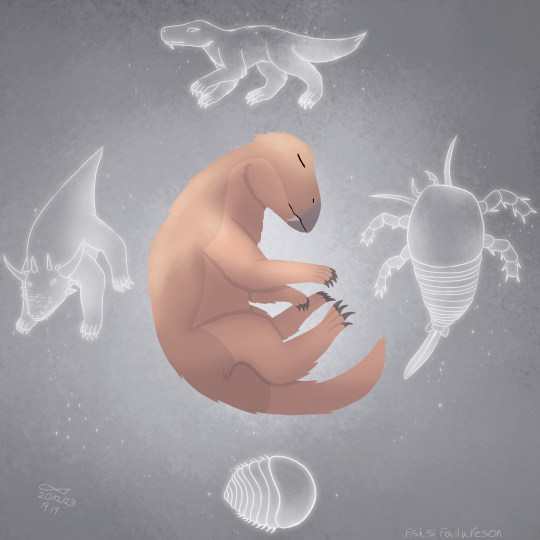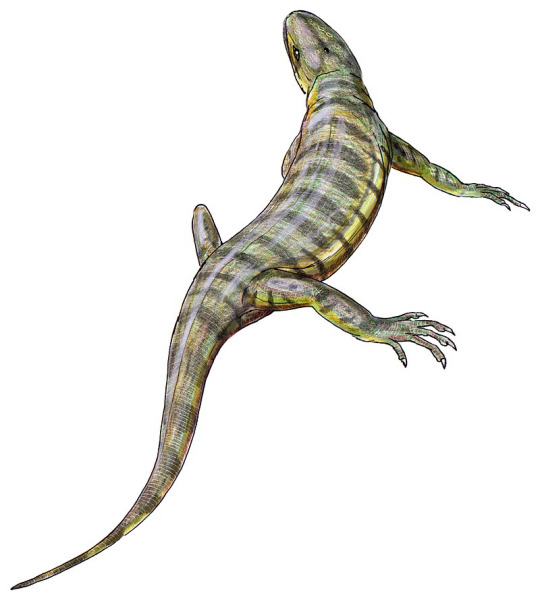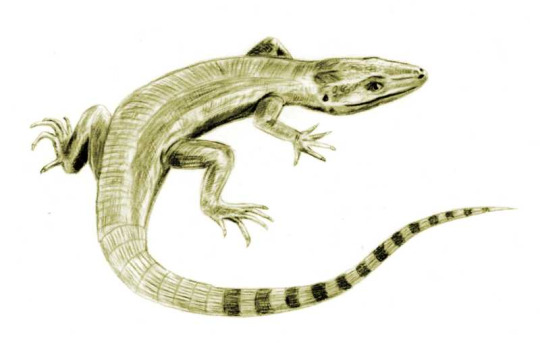#campylocephalus
Explore tagged Tumblr posts
Text

Thinking about them (Lystrosaurus)
#art#my art#digital art#paleoart#paleontology#palaeoblr#the great dying#synapsids#dicynodonts#lystrosaurus#lystrosaurus georgi#ditomopyge#campylocephalus#inostrancevia#elginia
93 notes
·
View notes
Text
Hibbertopterids lasted until the late Permian, so there's that!

Inostranscevia hunting Campylocephalus, by TrollMans
A Prologue to Amniotes
Part IV - The egg came first
Late Mississippian. It has been 40 million years since tetrapods first walked on land. Every generation since then, they have remained bound to the waters for at least one moment in their life cycle.
Despite their adaptations for walking on land, early tetrapod reproduction wasn't much different from that of their fish predecessors. Spawning, or external fertilization of an egg mass, with eggs covered in a gelatinous membrane laid in a body of water, prevending the permeable eggs from dessicating.
But things are now changing. While the mid-Carboniferous rainforests still provide safe, moist environments, reptiliomorphs have already begun adventuring further inland. As swamps left room to humid crevices to lay eggs in, creatures like Casineria also began to develop internal fertilization, refusing to leave their reproduction at the mercy of the elements.

Casineria kiddi, an early amniote relative by ДиБгд (CC-BY-SA 4.0)
Adventuring into even drier environments, ancestors of amniotes still had to solve two crucial problems. While a harder shell could prevent the egg from dessicating, it would doom the embryo to suffocation, by preventing it to get rid of carbon dioxide. Furthermore, the small size of the eggs - also constrained by gas exchange - limited the full development of the embryo before hatching.
To solve both of these issues, the outer layers of the eggs would have to be reshaped. The outer gelatinous layer was replaced by a fibrous membrane for protection, and later by the three layers known as extraembryonic membranes: the amnion, chorion and allantois. The innermost amnion would surround and protect the embryo, while the outer chorion and sac-like allantois take care of gas exchange and waste removal.
In the safety of the amniotic egg, the embryo was able to hatch considerably more developed than before. Skipping the larval stage, amniote youngs would hatch as miniatures of the adults, making them able to face the challenges of the Carboniferous world from the day of their birth.

Structure of the amniotic egg, by Lumen Learning (CC-BY)
As the Pennsylvanian began and climate started to dry out, later developments would perfect the ability of early amniotes to survive in drier, fully terrestrial environments. A thicker, less permeable skin will develop, incorporating keratin and preventing dessication. Cutaneous respiration, requiring the skin to be moist at all times, will give way to costal respiration, harnessing the power of the ribcage to expand and contract the lungs. Cutting their last ties with the water, amniotes had finally conquered the land.
On one fateful day, not long after the amniote body plan was perfected, one of the most decisive splits in vertebrate history would occur. A divergence of the amniotes into two major lineages, alternating domination of land, sea and sky for the next 320 million years. But sauropsids like Hylonomus would at first stay in the shadows. The stage of the Late Pennsylvanian would be left to their rivals and cousins, as forerunners like Archaeothyris paved the way for their own lineage: the synapsids.

Archaeothyris, one of the first known synapsids, by ArthurWeasley (CC BY-SA 3.0)
15 notes
·
View notes